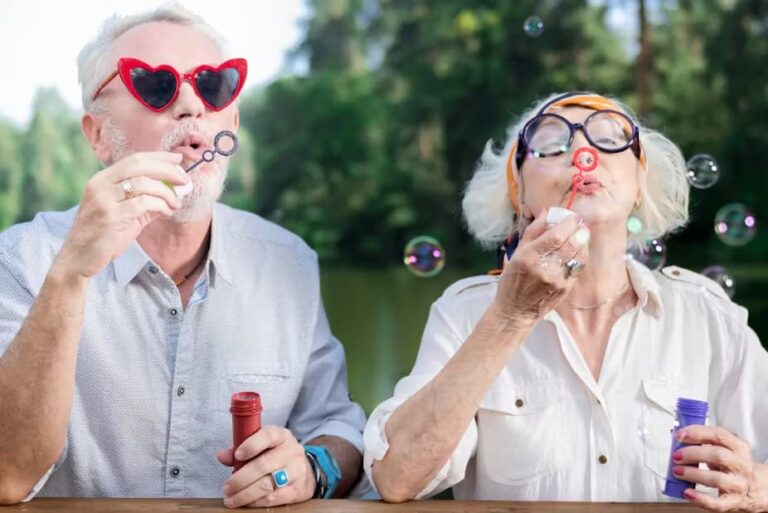2024-11-01 Expert Conversation Activity
Expert Conversation Activity
Instructions
In this activity, you will practice having conversations in English about topics you know well. This will help you improve your speaking skills and learn new vocabulary from your classmates.
Step 1: Preparation (5 minutes)
- On the worksheet, write 5 things you know a lot about
- These can be hobbies, skills, or topics you enjoy
- Example topics: cooking, gardening, traveling, sports, music, etc. (see below)
- Circle the 3 most interesting topics that you’d like to discuss
Step 2: Conversations (10-15 minutes)
- Your teacher will pair you with another student
- Take turns being the “expert” and the “interviewer”
- As the expert:
- Explain your topic clearly
- Use simple words when possible
- Give examples
- As the interviewer:
- Ask questions to learn more
- Show interest by nodding and responding
- Ask for clarification if needed
- Spend about 10-15 minutes on each conversation
- Your teacher will tell you when to switch partners
You might be an expert in…
- Making specific regional dishes or techniques (like perfect tamagoyaki or local specialties)
- Tea ceremony, kumihimo braiding, origami, ikebana, etc.
- Managing household finances and savings strategies
- Local shopping deals and seasonal sales patterns
- Family travel planning and organizing group trips
- Specific exercise routines like yoga or power walking
- Container gardening or growing specific plants on balconies
- Organizing small spaces efficiently
- Local community groups or PTA activities
- Preserving foods (making umeboshi, pickling vegetables)
- Specific hobbies like indoor plant care knitting
- Finding good deals on luxury items
- Coordinating family schedules and events
- Particular genres of music or specific artists/bands
- Local restaurants and food specialties
- Specific sports teams or athletes
- Photography equipment or techniques
- Fishing spots or techniques
- Golfing
- Home electronics or gadgets
- Specific periods of history
- Local hiking trails or outdoor activities
- Craft beer, whiskey, shochu or sake
- Car maintenance or specific car models
- Home DIY projects
Useful Phrases
When you are the expert
Starting your topic:
- “One thing I know a lot about is…”
- “I’ve been [doing this] for [X] years…”
- “I started because…”
Giving examples:
- “For example, last [time period], I…”
- “Actually, there are two [things] I really like…”
- “The most important thing I’ve learned is…”
Sharing details:
- “It usually costs around…”
- “The best time to [do something] is…”
- “If you want to try this, you should…”
Adding personal experience:
- “In my experience…”
- “Last time I [did this]…”
- “I’ve found that…”
When you are the interviewer
Starting the conversation:
- “I heard you know a lot about…”
- “Which topic would you like to discuss?”
- “Could you tell me about your expertise?”
Showing interest:
- “That’s clever! I never thought of…”
- “That sounds wonderful!”
- “I’d like to try that.”
Asking for more details:
- “What made you start [doing this]?”
- “Do you have any recommendations?”
- “Could you give me an example?”
- “How much time do you spend on this?”
Following up:
- “One last question…”
- “Do you have any tips for someone who wants to start?”
- “Maybe we could [do this] sometime?”
- “What’s your favorite…?”
Helpful reactions
- “That makes sense.”
- “That’s a good tip!”
- “That’s interesting! Have you ever…?”
- “I’ve always wanted to learn about that.”
Changing topics
- “Now, what topic would you like to share?”
- “What other topics are you an expert in?”
- “Should we move on to your expertise?”
Example Conversation 1
Maria: Hi John! What topics did you choose to talk about?
John: Well, one of my favorite topics is vegetable gardening. I’ve been doing it for about 10 years now.
Maria: Oh, that’s interesting! What made you start gardening?
John: Actually, I started because I wanted fresh tomatoes. The ones from the supermarket didn’t taste very good to me.
Maria: I agree! Supermarket tomatoes aren’t very tasty. What else do you grow in your garden?
John: I grow lots of things – carrots, peppers, and different herbs. But the most successful are my zucchini plants. Sometimes I have so many zucchini I give them to all my neighbors!
Maria: That’s wonderful! Do you have any tips for someone who wants to start a small garden?
John: Yes! Start with easy plants like lettuce or herbs. They don’t need much space, and you can even grow them in pots on a balcony.
Maria: That sounds like something I could try. Do you spend a lot of time taking care of your garden?
John: About 30 minutes every day in the growing season. It’s very relaxing after work.
Maria: I can imagine! Now I’m curious – what other topics are you an expert in?
Example Conversation 2
Keiko: Hi Tom! Which topic would you like to discuss?
Tom: Actually, I’d like to hear about your expertise. What topics did you choose?
Keiko: Well, one thing I know a lot about is organizing small spaces efficiently. I live in a 2DK apartment with my family, so I’ve learned many useful tricks.
Tom: Oh, that’s perfect! My apartment is quite small too. What’s the most important thing you’ve learned?
Keiko: I think the most important thing is to use vertical space. Many people only think about floor space, but walls and the backs of doors are very useful.
Tom: That’s interesting! Could you give me an example?
Keiko: Of course! In my kitchen, I installed hooks on the inside of cabinet doors to hang measuring spoons and ladles. And I use magnetic strips on the wall for knives. It saves a lot of drawer space.
Tom: That’s clever! I never thought of using cabinet doors that way. Do you have any tips for organizing clothes? My closet is always messy.
Keiko: Yes! I use the konmari folding method – you fold clothes so they stand up vertically in the drawer. This way, you can see everything at once. Also, I change my clothes seasonally. Right now, all my summer clothes are in vacuum bags under the bed.
Tom: Vacuum bags! That’s a good idea. But doesn’t it take a lot of time to stay organized?
Keiko: Actually, once you have a good system, it saves time. I spend maybe 15 minutes each evening putting things back in their places. It’s much better than spending hours searching for things!
Tom: That makes sense. One last question – what’s your favorite storage item or tool?
Keiko: Hmm… probably clear storage boxes. I buy them at the 100-yen shop. When boxes are clear, you can see what’s inside without opening them. And they stack very well!
Tom: I’ll definitely try that. Thanks for all the great tips!
Keiko: You’re welcome! Let me know if you try any of these ideas. Now, what topic would you like to share?
Example Conversation 3
Yuki: Hi David! What would you like to talk about?
David: Hi Yuki! I heard you know a lot about restaurants in this area?
Yuki: Yes, that’s right! I’ve lived here for 15 years, and I love trying different restaurants. I keep notes about all the places I visit.
David: That’s amazing! I’m always looking for good lunch places. Do you have any recommendations?
Yuki: Of course! What kind of food do you like? There’s a wonderful teishoku place just two minutes from here. Their salmon is always fresh, and they change their side dishes every day.
David: That sounds good! How much does a typical lunch cost there?
Yuki: Their lunch sets are usually around 900 yen. And if you go after 1:30, they give you a little extra rice or miso soup for free. But it gets crowded, so I recommend going before noon or after 1:00.
David: Those prices are reasonable! What about places for dinner? Sometimes I want to take friends somewhere special.
Yuki: There’s a hidden izakaya in the small alley behind the station. It looks small from outside, but they have private rooms upstairs. Their chef makes amazing seasonal dishes. Last week, I had the most delicious matsutake soup there.
David: I’ve walked past that area many times but never noticed it! Is it expensive?
Yuki: It’s about 4000 yen per person with drinks. Oh, and you should make a reservation if you want a private room. The counter seats are nice too, though.
David: Do you have a favorite ramen shop too?
Yuki: Actually, there are two I really like! For tonkotsu ramen, I go to the shop near the park – they make their noodles fresh every morning. But for shoyu ramen, the small shop next to the convenience store is the best. Their chashu is so tender!
David: You really know a lot about this! How do you find all these places?
Yuki: I follow some local food blogs, but mostly I just like walking around different neighborhoods. Sometimes the best places are the ones without big signs or advertisements. Also, I always ask the staff for recommendations – they often know other good restaurants nearby.
David: That’s a good tip! One last question – which restaurant is your absolute favorite?
Yuki: That’s difficult to answer! But if I had to choose, there’s a small family-run place that serves home-style cooking. The grandmother makes everything herself, and she remembers everyone’s preferences. It feels like eating at home!
David: That sounds wonderful. Maybe we could go there sometime?
Yuki: Sure! We should organize a lunch with our other classmates. Now, tell me about your expert topic!








BTS, whose songs are popular all over the world, is Korean pop singer consisting of 7 members. The leader of BTS is called RAM and he is a very nice person. Off course I had known some of their songs , including” Butter”, however, I learned today that they have a strong will to contribute to society to make the world a better place to live in, especially for the young people. I now understand why they made a speech at United Nations a few years ago.
Interesting! Did you learn that from Akino-san or is someone else also a K-pop fan?
Small detail: The leader of BTS is actually called RM.
I didn’t know anything about their philanthropic activities so I did a little research:
• BTS launched the LOVE MYSELF campaign with UNICEF to support children and young people, promote self-love, and raise *a lot* of money for various charitable causes. It would be nice if Mark Zuckerberg could help teens like this instead of hurt them with his social media platforms.
• BTS has spoken at the United Nations multiple times, including at the launch of UNICEF’s “Generation Unlimited” initiative and as special envoys for President Moon Jae-in. (It’s interesting that the UN gets much more attention in Japanese media than in the US. I have no idea what goes on at the UN, but I see it often in the news in Japan.)
• BTS members, such as Jin, have engaged in individual charitable activities, including *huge* anonymous donations to UNICEF Korea.
• BTS has donated to various causes, including children’s welfare, disaster relief, and social services. The details are impressive.
• BTS’s charitable actions have inspired their fanbase, ARMY, to engage in philanthropic activities.
Thank you for sharing! I learned a lot about BTS I didn’t know.
What I learned from Keiko-san in today’s lesson is about travelling.
She has been to various countries, such as Australia, U.S.A., France, Singapore, Korea, China, Malaysia, and so forth. And one of her favorites is Australia and various marsupials(有袋類) and other wildlife she saw near Melbourne.
Among them, what interested me most was about a flock of flying wild parrots.
Since my image of parrots was just one or two kept in a birdcage, I could not imagine a flock of them flying.
Though seeing wildlife has never been my travel objective, I begin to feel that it could be.
As my late father-in-law was a wildlife lover, and often visited Africa. I am thinking going to my wife’s home to see photos and videos of African wildlife he left us.
One of the most amazing places in the world to see wildlife is the Galapagos Islands off the coast of Ecuador. The animals never developed a fear of humans so you’re practically tripping over them. I spent my last year of high school in Ecuador as an exchange student and was able to visit the Galapagos.
Unlike Australia, none of the animals there want to kill you. 😉
I learned about rugby today. Rugby may seem rough and wild, but it’s actually a well-organized and impressive sport. Teamwork is extremely important. There is a Rugby World Cup tournament every four years. In Europe, six strong teams, including Scotland and Ireland, belong to Tier 1 and play 15 games each year. Atsushi has recorded over 1,000 games and wonders if he’ll be able to watch them all in his lifetime.
Rugby is also a fun sport to photograph. The game is grueling on the players–it’s like American football without any protective gear. Their faces aren’t covered so you can capture a lot of emotion–mostly pain. I used to teach a student in his 60’s who still played. There are even players in their 80s in Japan who still play, but it’s a no-contact version of the game.
I didn’t know even senior people can play rugby. It’s really amazing!